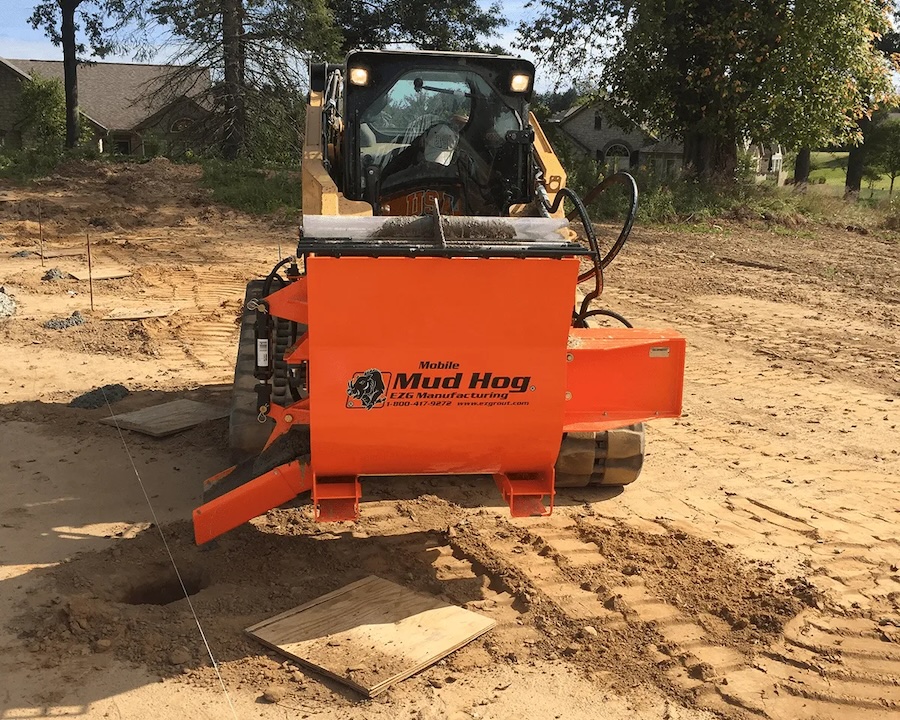
View the complete article here.
In today’s fast-paced construction industry, efficiency and productivity are critical to staying on schedule and within budget. One tool that has proven invaluable in achieving this goal is the portable mixer. Whether you’re working on a small residential project or a large commercial job site—the right portable mixer can streamline operations, reduce labor costs, and ensure a consistent mix quality every time.
The Benefits of Using Portable Mixers
Portable mixers have become a staple on job sites due to their versatility and ease of use. Unlike stationary mixers, portable models offer flexibility—allowing contractors to move them easily around the job site and mix materials closer to the point of application. This not only saves time but also reduces the physical strain on workers who would otherwise have to transport heavy materials manually.
Key benefits of portable mixers include:
- Enhanced mobility: Portable mixers can be wheeled directly to the work area, reducing downtime and the need for extra equipment.
- Consistency and quality: Modern portable mixers are designed to handle a variety of materials—including concrete, mortar, and grout—ensuring a uniform mix that meets project specifications.
- Labor efficiency: By eliminating the need for manual mixing, these mixers help reduce labor requirements—freeing up workers to focus on other tasks.

How Portable Mixers Work
Portable mixers are designed to streamline the mixing process—ensuring uniform consistency of materials like concrete, mortar, and grout. The core components of a typical portable mixer include the drum, mixing paddles (or blades), and the power source—which can be electric, gas, or manual.
- The drum: The drum is where the materials are loaded for mixing. It rotates on an axis, which helps to agitate and blend the contents. The shape of the drum is designed to prevent material from sticking and to enhance the mixing action.
- Mixing paddles: Inside the drum, the paddles or blades are fixed in place. These paddles are strategically angled to lift and fold the material as the drum rotates, ensuring an even and consistent mix. The design of the paddles minimizes dead spots, where unmixed material could gather.
- Power source: The mixer’s motor powers the rotation of the drum. Electric mixers are popular for smaller projects due to their quiet operation and easy setup. Gas-powered mixers offer more portability and are ideal for job sites without access to electricity. Manual mixers, while less common, can be useful in remote locations where no power is available.
- The mixing process: To operate the mixer, users typically add water first—followed by the dry mix (sand, cement, or grout). As the drum rotates, the paddles move the mixture—incorporating the water evenly throughout. The rotation speed and paddle design ensure that the materials are mixed efficiently, preventing clumps and ensuring a homogenous blend.
Choosing the Right Portable Mixer
Selecting the right portable mixer for your project depends on several factors—including the type of material you’re mixing, the size of the job, and the specific needs of your crew. Here are a few considerations to keep in mind:
- Capacity: Ensure the mixer’s capacity aligns with the volume of material you need to mix. Oversized mixers may be unnecessary for small jobs, while underpowered units could struggle with larger batches.
- Power source: Depending on the job site—you may need a mixer powered by electricity, gas, or even manual operation for remote locations without access to power.
- Durability and maintenance: Look for mixers built with sturdy materials that can withstand the rigors of a construction site. Easy maintenance features, such as accessible grease points and removable components, can help extend the life of the mixer.
Tips for Maximizing Efficiency with Portable Mixers
To get the most out of your portable mixer and boost productivity, consider the following tips:
- Proper setup: Position the mixer close to your work area to minimize the distance materials need to be transported.
- Regular maintenance: Keep the mixer in good working order by following manufacturer maintenance guidelines. This includes regular lubrication, cleaning, and checking for wear-and-tear.
- Optimize mix times: Avoid overmixing or undermixing by following recommended mixing times for the specific material you’re using. This helps ensure a consistent, workable mix every time.
- Train your crew: Ensure that your crew is trained in the proper use and safety of the portable mixer. This can prevent accidents and reduce downtime.
Final Thoughts
When it comes to reliable, high-performance portable mixers—EZG Manufacturing’s Mud Hog line stands out. These mixers are designed with contractors in mind, featuring durable construction and user-friendly designs that enhance productivity. The Mud Hog mixers offer excellent mobility and can handle a range of materials—including mortar, grout, and concrete. With their innovative mixing paddles and high-capacity drums—they ensure consistent, high-quality mixes while reducing the time and effort needed on the job site.
View the complete article here.
What are the benefits of using portable mixers on job sites?
Portable mixers offer enhanced mobility, consistent mix quality, and labor efficiency, reducing downtime and physical strain. How do I choose the right portable mixer for my project?
Consider the mixer’s capacity, power source, and durability to match the material and job site requirements.














































